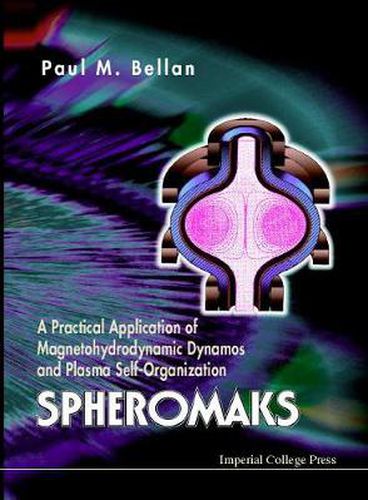Readings Newsletter
Become a Readings Member to make your shopping experience even easier.
Sign in or sign up for free!
You’re not far away from qualifying for FREE standard shipping within Australia
You’ve qualified for FREE standard shipping within Australia
The cart is loading…






Spheromaks are easily formed, self-organized magnetized plasma configurations that have intrigued plasma physicists. Sometimes called magnetic vortices, magnetic smoke rings, or plasmoids, spheromaks first attracted attention as a possible controlled thermonuclear plasma configuration scheme, but are now known to have many other applications. This text begins with a review of the basic concepts of magnetohydrodynamics and toroidal magnetic configurations, then provides a detailed exposition of the 3D topological concepts underlying spheromak physics, namely magnetic helicity, Taylor relaxation, force-free equilibria, and tilt stability. It then examines spheromak formation techniques, driven and isolated configurations, dynamo concepts, practical experimental issues, diagnostics, and a number of applications. The book concludes by showing how spheromak ideas are closely related to the physics of solar prominences and interplanetary magnetic clouds.
$9.00 standard shipping within Australia
FREE standard shipping within Australia for orders over $100.00
Express & International shipping calculated at checkout
Spheromaks are easily formed, self-organized magnetized plasma configurations that have intrigued plasma physicists. Sometimes called magnetic vortices, magnetic smoke rings, or plasmoids, spheromaks first attracted attention as a possible controlled thermonuclear plasma configuration scheme, but are now known to have many other applications. This text begins with a review of the basic concepts of magnetohydrodynamics and toroidal magnetic configurations, then provides a detailed exposition of the 3D topological concepts underlying spheromak physics, namely magnetic helicity, Taylor relaxation, force-free equilibria, and tilt stability. It then examines spheromak formation techniques, driven and isolated configurations, dynamo concepts, practical experimental issues, diagnostics, and a number of applications. The book concludes by showing how spheromak ideas are closely related to the physics of solar prominences and interplanetary magnetic clouds.